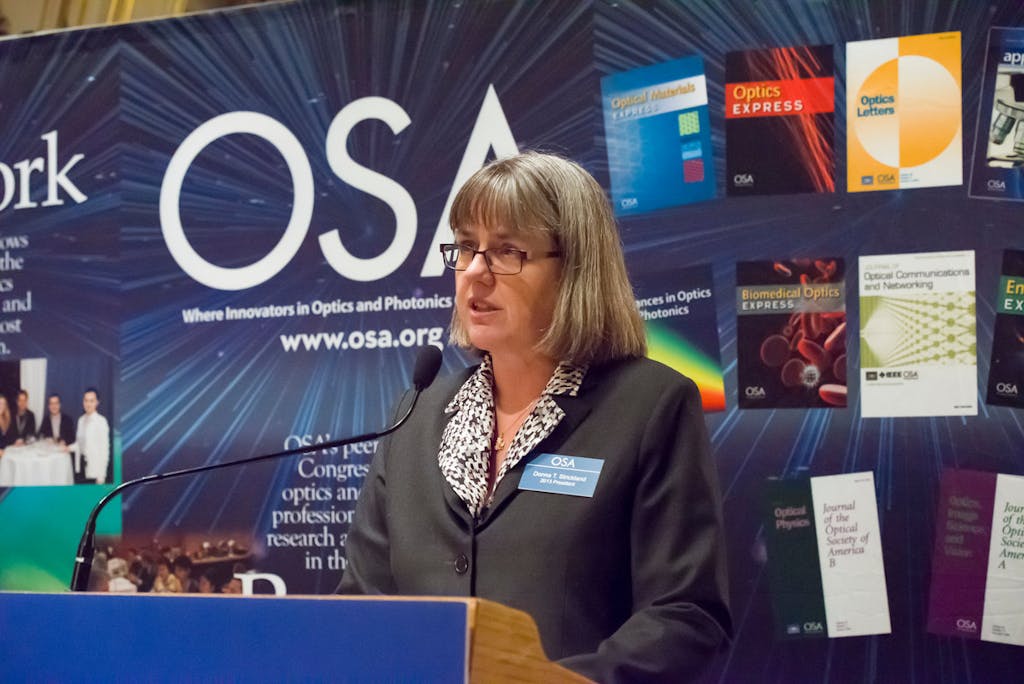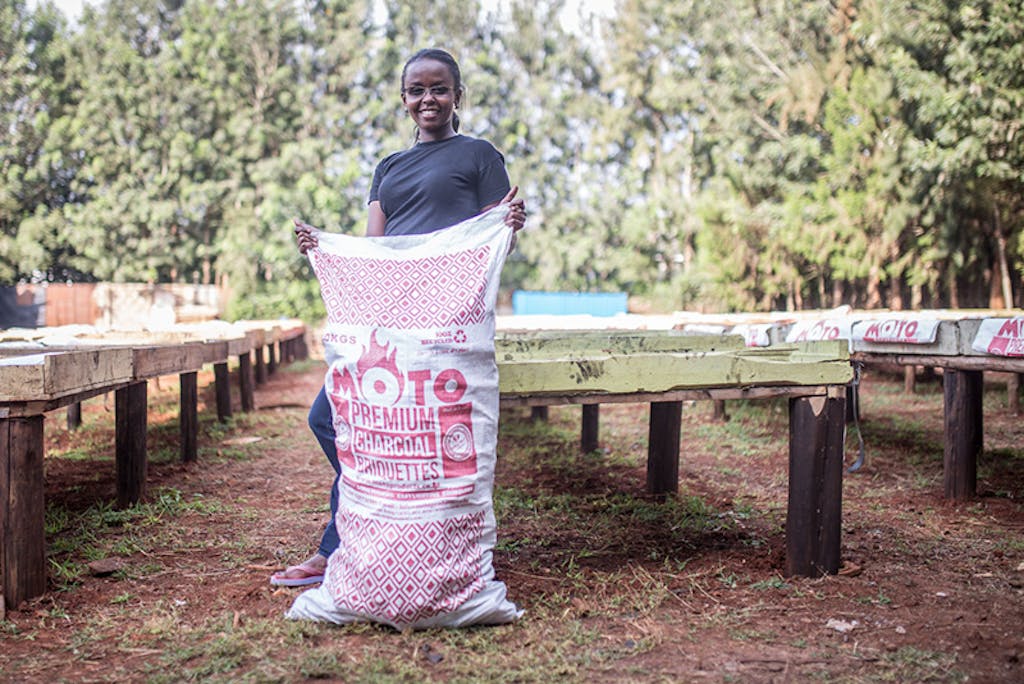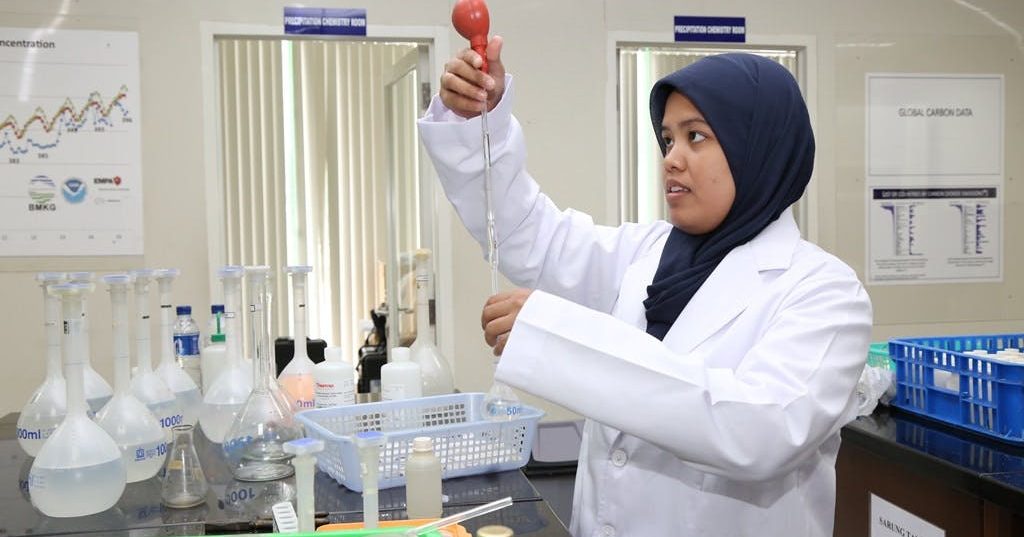Last week, Donna Strickland became the first woman to win the Nobel Prize in Physics in 55 years.
While her well-deserved acknowledgement gives us a reason to celebrate her pioneering work in generating high-intensity laser pulses, a method used in modern LASIK eye surgery, her win also reflects a larger problem in society: women’s limited access to training in STEM fields, or Science, Technology, Engineering, and Mathematics.

In the 116-year history of the Nobel Prize in Physics, only three women have won. 97% of all Nobel Prize winners have been men. While it’s true that women scientist are far less likely to be recognized and much less celebrated for their work, the problem has its roots in the pervasive stereotypes, biases and discrimination that prevent girls from pursuing and excelling in STEM fields.
Today, on the International Day of the Girl, UNICEF is also calling attention to the global gender gap in access to education and employment opportunities through the theme With Her: Skilled GirlForce. As we move full speed into a digital era that is defined by rapid advances in science and technology – and face a mounting list of global issues that need innovative solutions – UNICEF has declared that now is the time to dismantle social norms that perpetuate these gender gaps and close them forever.
What’s Creating the STEM Gap?
Jobs in science and technology are some of the fastest growing worldwide, with 90% of future jobs requiring Information and Communication Technology (ICT) skills. However, one-fourth of young people – mostly girls – are neither currently employed nor in school or in training. In STEM, only 30% of female students choose to pursue science-related careers in higher education.
But many girls never make it to primary school. Right now, five million more girls than boys are currently out of school.
Girls face far more barriers than boys do at every stage of their lives, starting at a very young age.
- In households struggling to make ends meet, girls are more likely than boys to stay at home and support the family, while boys – seen as future breadwinners – go to school.
- In too many countries, the persistence of early and forced childhood marriage denies girls their right to education and blunts their life choices and full potential.
- Simply entering adolescence can mean an end to education if girls do not have resources to take care of their bodies. An estimated one in 10 girls in Africa miss school during menstruation because of inadequate menstrual health supplies or sanitation facilities.
- Even in countries with near gender parity in education, stubborn biases are still established early. A study in Science found that by age six, girls are less likely than boys to describe their own gender as “brilliant” and less likely to join an activity labelled for “very, very smart kids.”
- With STEM in particular, an unfortunate bias that girls are not as smart as boys – or have no interest in these careers – persists. This is flat wrong. According to a 2018 poll by Girl Up on global Gen Z girls, the vast majority of girls (81%) think it’s important to have the same access to STEM learning that boys have, but less than half (42%) feel that they have equal access.
And unfortunately, the lack of female role models, mentors, and decision makers only re-enforces existing barriers.
How We Can Inspire More STEMinists?
Our complex global agenda and its challenges – from climate change to rising hunger to emerging health threats – require all the ingenuity and brain power we can summon. As Deputy Secretary-General Amina J. Mohammed has said, “Without equality and empowerment, we will simply perpetuate today’s paradigm: trying to address all the world’s challenges with only half the world’s assets.”
The most promising solutions may very well lie in the minds of young girls, just waiting to be unleashed. We don’t have to look far to see this potential.
Miranda Wang, a 2018 UN Environment Young Champion of the Earth, and her lab partner Jeanny Yao, are pioneering a chemical recycling system that breaks down unrecyclable plastic waste.
Chebet Lesan, the Global Alliance for Clean Cookstoves’ Woman Entrepreneur of the Year, is tackling air pollution through an eco-friendly cooking fuel for low-income families in Kenya.
And Alexandria Lafci, co-founder of the nonprofit New Story, is transforming slums into sustainable communities by harnessing the power of 3D-printing technology (see her talk at the Social Good Summit).

When 193 Member States signed on to the 17 Sustainable Development Goals, they committed to inclusive, equitable education (SDG 4), gender equality (SDG 5), and leaving no one behind.
While we’ve made progress in many of these areas, we have serious work to do.
Here’s what we can do to be better Feminists and STEMinists for girls everywhere:
- First, we need greater investment in quality education (SDG 4) to give all children a chance. The International Financing for Education facility, which gained new backing at the UN General Assembly, promises to unlock $10 billion in funding to help tens of millions of children go to school and prepare millions more young people for careers.
- Educations plans at every level need to be gender aware and gender transformative, and education systems need to be held accountable. That means more and better gender-disaggregated data, paying special attention to barriers facing girls and implementing gender-focused strategies.
- We need to build and support pipelines to STEM programs, networking, and scholarship opportunities for girls and women. Girl Up’s WiSci STEAM Camps, which enhance skills and leadership in Science, Technology, Engineering, Arts & Design, and Mathematics, are great examples of such opportunities.
- We must stop politicizing girls’ bodies and health. Girls have a right to information and services, including contraception and other reproductive health services, so they can make free and informed choices, and stay in school.
- Finally, the discrimination needs to end. We need to end early and forced child marriage for good. We need to enforce codes of conduct for students and teachers that promote equality. And we need to elevate female leaders, scientists, and entrepreneurs as powerful role models across society.
At the Nobel Prize press conference, Strickland said, “We need to celebrate women physicists because we’re out there.” Indeed, and the pathways and principles to ensuring more girls can thrive in science, technology, engineering and math endeavors are out there, too.

